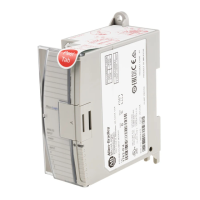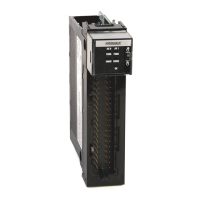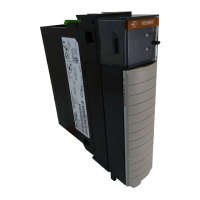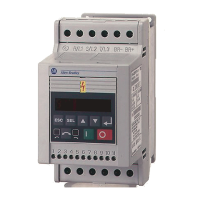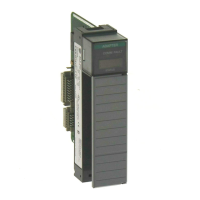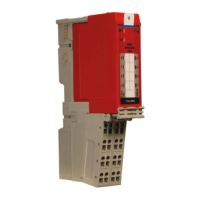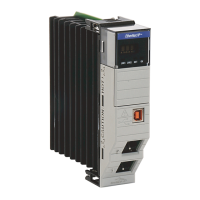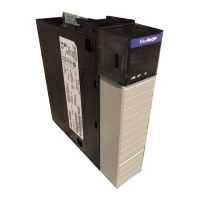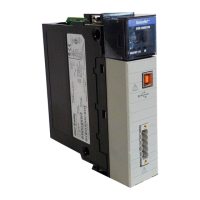Publication 1762-RM001C-EN-P
6-2 Using High-Speed Outputs
Pulse Train Output
Function
The MicroLogix 1200 1762-L24BXB and 1762-L40BXB controllers each
support one high-speed output. A MicroLogix 1500 controller utilizing a
1764-28BXB Base Unit supports two high-speed outputs. These outputs
can be used as standard outputs (not high-speed) or individually
configured for PTO or PWM operation. The PTO functionality allows a
simple motion profile or pulse profile to be generated directly from the
controller. The pulse profile has three primary components:
•
Total number of pulses to be generated
•
Accelerate/decelerate intervals
•
Run interval
The PTO instruction, along with the HSC and PWM functions, are
different than most other controller instructions. Their operation is
performed by custom circuitry that runs in parallel with the main system
processor. This is necessary because of the high performance
requirements of these functions.
In this implementation, the user defines the total number of pulses to be
generated (which corresponds to distance traveled), and how many
pulses to use for each acceleration/deceleration period. The number of
pulses not used in the acceleration/deceleration period defines how many
pulses are generated during the run phase. In this implementation, the
acceleration/deceleration intervals are the same.
Within the PTO function file, there are PTO element(s). An element can
be set to control either output 2 (O0:0/2 on 1762-L24BXB, 1762-L40BXB
and 1764-28BXB) or output 3 (O0:0/3 on 1764-28BXB only).
The interface to the PTO sub-system is accomplished by scanning a PTO
instruction in the main program file (file number 2) or by scanning a PTO
instruction in any of the subroutine files. A typical operating sequence of
a PTO instruction is as follows:
1. The rung that a PTO instruction is on is solved true.
2. The PTO instruction is started, and pulses are produced based on the
accelerate/decelerate (ACCEL) parameters, which define the number
of ACCEL pulses and the type of profile: s-curve or trapezoid.
3. The ACCEL phase completes.
4. The RUN phase is entered and the number of pulses defined for RUN
are output.
5. The RUN phase completes.
6. Decelerate (DECEL) is entered, and pulses are produced based on the
accelerate/decelerate parameters, which define the number of DECEL
pulses and the type of profile: s-curve or trapezoid.
7. The DECEL phase completes.
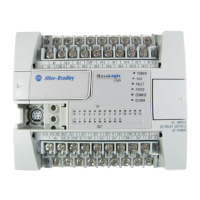
